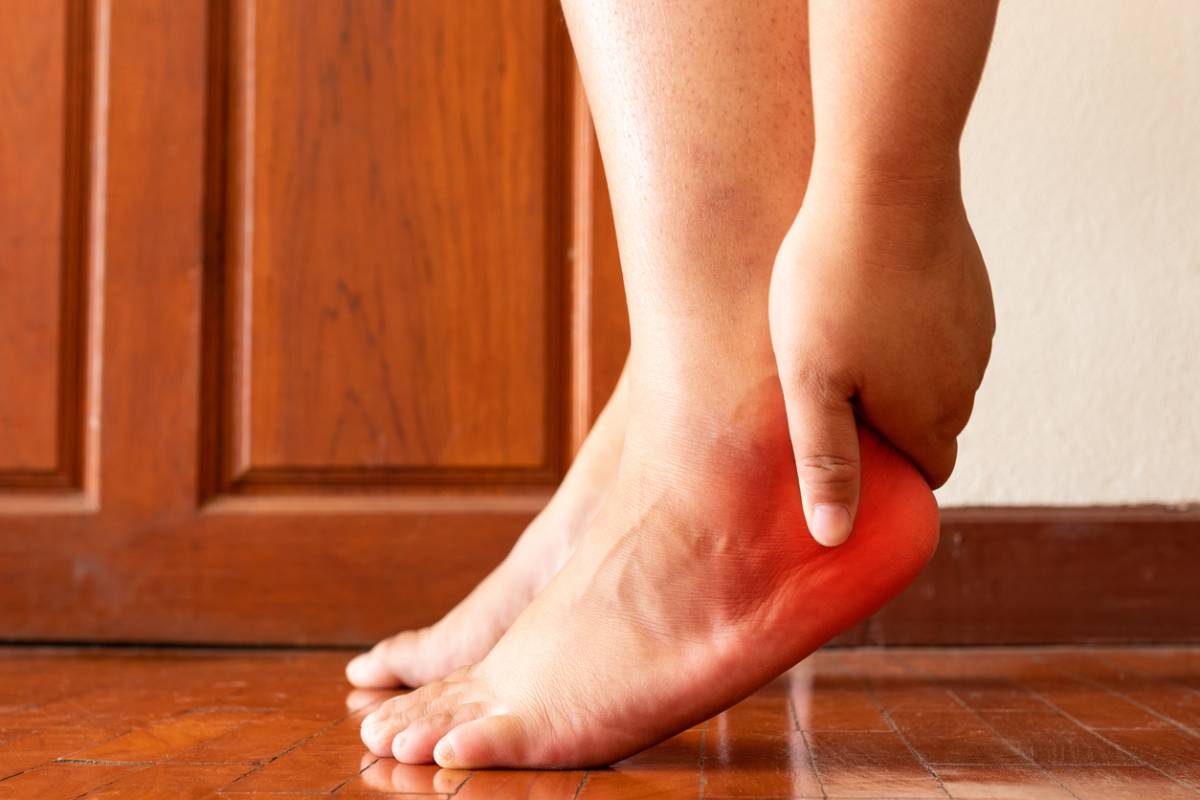The health of your heel is integral to your foot health. Issues with your feet can impact your daily life. Heel spurs are a common issue characterized by bony outgrowths on the underside of your heel bone. You may wonder, can heel spurs become inflamed? Below you will find more information on the risk factors of heel spurs, how to address any inflammation, and what preventative measures you can take to reduce your risk of the condition.
Can Heel Spurs Become Inflamed?
Heel spurs are calcium deposits that form on the underside of your heel. They appear gradually over an extended period of time due to repetitive strain on your foot. They can occur for a variety of reasons, but they often form as a result of activities that involve excessive pressure on the heel. This includes things like running, jumping, or standing for long periods.
Heel spurs are often associated with plantar fasciitis. Plantar fasciitis is a condition characterized by inflammation of the plantar fascia, which is a thick band of tissue that runs along the bottom of your foot. The inflammation of the plantar fascia can lead to the formation of heel spurs. While heel spurs themselves are not typically painful, they can contribute to heel pain when inflammation occurs in the surrounding tissues.
Risk Factors for Heel Spurs
Heel spurs are a common foot condition and there are several factors that increase your likelihood of the condition. Consider the following to reduce your risk.
Repetitive Activities:
Certain activities can put excessive stress on your feet. Repetitive movements or prolonged periods of standing can impact your feet and can also increase your risk of heel spurs. Certain professions that require repetitive movements, running, and dancing are all common activities that can cause heel spurs. Reduce your risk by maintaining a healthy weight, using proper mechanics, and taking rests when needed.
Unsupportive Footwear:
Your shoe choice is an integral component of your foot health. Wearing ill-fitting shoes or those lacking proper arch support can strain the plantar fascia and lead to the development of heel spurs. Work with a skilled podiatrist at the center for heel pain treatment to ensure you have the right shoes to support all of your activities.
Foot Mechanics:
The natural structure and mechanics of your feet can impact your risk of heel spurs. Having an abnormal foot structure or mechanics, such as flat feet or high arches, can put excessive stress on the plantar fascia. Work with a skilled podiatrist on preventive steps you can take to reduce your risk for harmful foot issues.
Age:
While you cannot control the aging process, you can take preventive measures to reduce your risk of heel spurs. Heel spurs are more common in individuals over 40. As you age, your body’s ability to repair and maintain healthy tissues diminishes. Focus on maintaining a healthy weight, wearing supportive footwear, and seeking medical treatment right away if you notice any issues with your feet.
Heel Spur FAQs
You may wonder what heel spurs are and what you should do about them. Consider the following heel spur FAQs to stay informed on what to do if you experience issues with your heels.
Common Symptoms:
The symptoms of heel spurs may include sharp and localized heel pain, tenderness, swelling, inflammation, and a feeling of a small bump or protrusion on the heel. Monitor your symptoms, including the severity and frequency.
Seek Treatment:
It is advisable to seek medical help if you experience persistent heel pain or if your symptoms significantly affect your daily activities and quality of life. Seeking treatment early on can improve your outcomes if you have heel spurs.
Prevention Measures:
To prevent heel spurs from recurring, it is important to maintain a healthy weight, wear supportive footwear, avoid excessive impact on the heels, and engage in regular stretching and strengthening exercises for the feet and lower legs.
